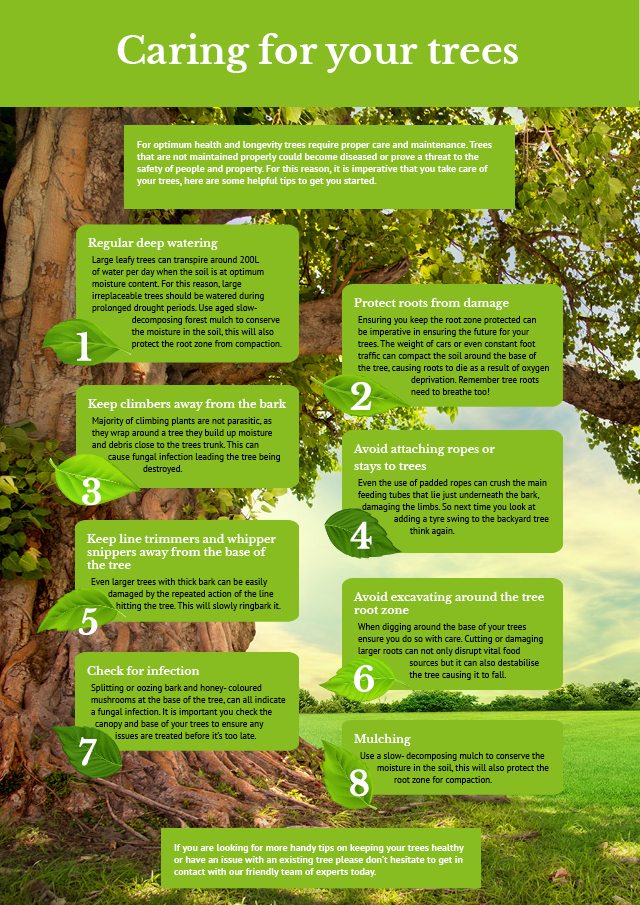Assessing The Viability Of Trees: Figuring Out When Elimination Is Crucial
Assessing The Viability Of Trees: Figuring Out When Elimination Is Crucial
Blog Article
Authored By-Lindgaard Levy
If you have actually ever before questioned the fate of the trees on your residential property, understanding when it's time for elimination is crucial. Yet exactly how do you establish if a tree can be conserved or if elimination is the only option? By seeking specific indicators and assessing safety and security dangers, you can make educated decisions that profit both your landscape and your surroundings. Allow's check out the vital factors that enter play when making a decision the fate of a tree and just how you can make sure the most effective outcome for your environment-friendly buddies.
Signs of Tree Decrease
If you notice any of the adhering to indications of tree decline in your backyard, it may be time to think about tree elimination.
One common sign is dead or rotting branches, which can show underlying concerns affecting the tree's health and wellness. Keep an eye out for stained or wilted fallen leaves that persist even with proper care, as this could be a sign of disease or bugs.
Another warning signal is too much leaning or an obvious shift in the tree's base, which might recommend root concerns or structural instability. Watch out for fungal development on the trunk or roots, as this can indicate rot and compromise the tree's security.
In addition, if you observe big splits in the trunk or major limbs, it's vital to address these problems without delay to stop potential risks. Dealing with these indications of tree decrease immediately can assist maintain the safety and aesthetics of your backyard setting.
Safety and security Problems
To make certain the wellness of your residential or commercial property and those around you, focusing on security concerns related to trees is extremely important. Trees can present various safety threats otherwise correctly kept. Dead or rotting branches may fall all of a sudden, threatening individuals or damaging structures.
Leaning call maintenance can likewise be harmful, specifically if they're leaning in the direction of a structure or high-voltage line. Additionally, trees with substantial root systems near structures or underground utilities can create substantial damage with time.
why not try these out to on a regular basis evaluate your trees for any kind of indications of potential danger. Keep an eye out for splits in the trunk, big tooth cavities, or indications of condition and degeneration. If you see any one of these problems, it's finest to consult with a specialist arborist to evaluate the situation and figure out the required course of action.
Taking proactive actions to resolve safety problems promptly can prevent crashes and home damages in the future. Bear in mind, the safety and security of your residential or commercial property and those around you must constantly be the leading concern when it pertains to tree maintenance.
Consulting an Arborist
When considering the health and wellness of your trees, consulting an arborist is a critical step. Arborists are educated specialists who focus on the care and upkeep of trees. They can evaluate the total health of your trees, identify any kind of problems such as illness or structural problems, and give experienced recommendations on the very best course of action.
By speaking with an arborist, you can receive useful understandings into the condition of your trees and determine whether removal is necessary. Arborists have the knowledge and experience to assess the risks related to maintaining a tree versus removing it. They can also provide guidance on alternate options, such as pruning, cabling, or bracing, to help maintain the tree whenever feasible.
Additionally, arborists can aid you navigate any local guidelines or allows that might be required for tree elimination. Their knowledge can make certain that the procedure is performed safely and in compliance with any kind of relevant laws.
Verdict
Finally, when identifying whether trees can be conserved or if removal is essential, it is necessary to take into consideration indications of decline and safety and security concerns. Consulting an arborist for a thorough analysis is important in making the best decision for the tree's health and wellness and prospective threats. Remember, proactive care and timely activity can help preserve trees and protect against accidents.
